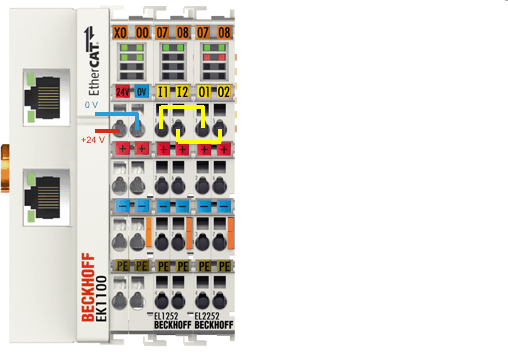Beckhoff Sample Plc Program
I have extensive experience in both ST and C/C++ on TwinCAT 3. In TC3, the C/C++ language environment makes it a lot easier to accidentally crash the OS (BSOD), and make it a lot harder to debug things when you do. This is because, in TwinCAT 3, user C/C++ code runs in driver space on the OS in order to be real-time. The driver context also means you're very limited in what you can do in your code without jumping through hoops. The C/C++ stuff seems to be targeted at filling needs that aren't easily met using TwinCAT's IEC 61131 PLC, such as implementing complex algorithms and interfacing with unsupported hardware. The idea is that the required functionality is implemented in C/C++, and the control application is still implemented in ST or another IEC 61131-3 language, with the latter handling the bulk of the system's operation and providing the 'glue' to incorporate the functionality of the former into the larger system.
Beckhoff TwinCAT Mapping TwinCAT PLC Variables to I/O Revision: 1.1. When the PLC program is written, all variables must be declared in the VAR section. Program At90s2313 With Arduino Uno.
Batman Arkham City Pc Game Tpb Torrent. Also, while the documentation for the PLC environment on TC3 isn't the best, it's okay, and a hell of a lot better than the docs for the C/C++ environment. Don't get me wrong; the ability to write low-level components for TwinCAT 3 is really great, is well thought-out, and provides a lot of power that we use routinely to make reusable software components for our control systems, but those control systems are still primarily written in ST. Using a particular language depends on a lot of factors, e.g. - what is the target system - who is the end-user - Object-orientation and other typical features of low-level languages - what other libraries/references are you planning to use (inter-compatibility) Principally, you can program you code in C++ as well as in ST (or other PLC languages). There are no specific advantages except time saved in learning ST If it is small, concise application, I recommend using ST. Its fast and easy to debug, syntax similar to C/C++. If you use/have used more than one CodeSys or IEC 61131-compliant control system, ST is a bit more portable, which is another advantage it has over C/C++ which aren't in the standard and aren't always supported (and when they are, not always the same way).
Vocalign Au Rapidshare. As @JBC said above, ST is a little easier to troubleshoot when things go wrong, partly because it's stricter at compile-time, and partly because you can write IEC-check libraries to check for things like array out of bounds and divide by zero errors during testing (although it's generally not a great idea to leave them enabled in a production system).
